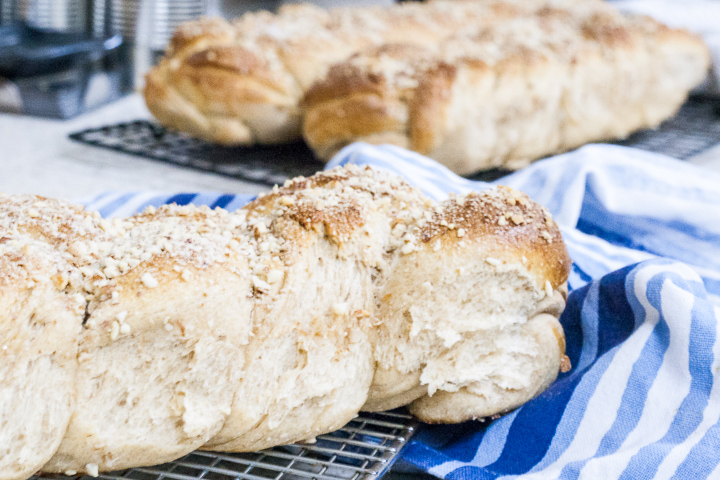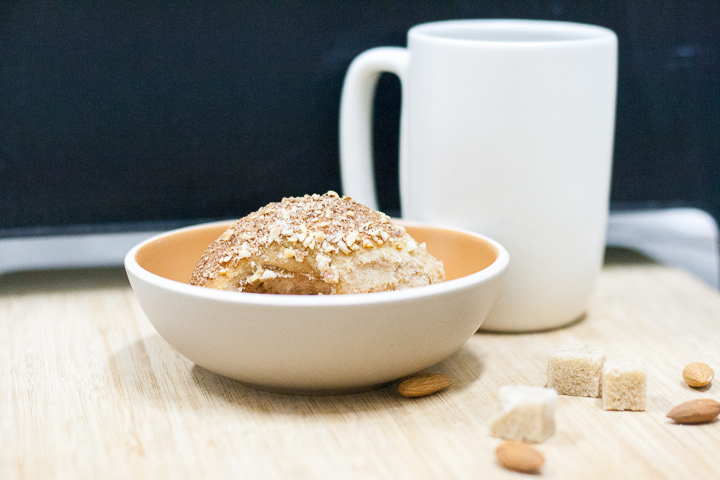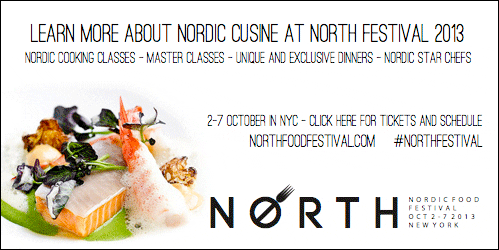>> This is a SPONSORED POST brought to you by Honest Cooking and the NORTH Festival
If it’s something I’ve learned from these years of living abroad, it’s that ‘home’ means something a little different to everyone. To my dear husband, this might very will be his home icon on his trusty desktop iMac more than anything else, in which he can get lost in for hours at a time. But for me? It’s my kitchen, and everything in it, that makes my heart at ease, telling me I’m home.
My pals at Honest Cooking are hosting the NORTH Food Festival in October in NYC, a place I once called home. The NORTH Food Festival focuses a much-deserved spotlight on the Scandinavian countries (Norway, Sweden, Denmark), Iceland, and Finland. They’ve asked me to write up a little something about the foods of Finland, and because I’ve been so enraptured with what home cooking means to me, to you, to everyone these days, I immediately wanted to bring a little taste of Finland home to the table.
So I started writing: Finland. Salmon. Salmon Roe. Dill. Cured fish. Licorice. Snow. Fish. Blonde People. Good healthcare. Getting off track, drat. Fish. Chives? Dill. Fish.
And as I read over my freshly brainstormed word-association exercise on Finland, I realized, though Nordic cuisine is making its name in the culinary world today the individual restaurants and chefs stand out more than the countries’ cuisines themselves. And though a restaurant can certainly represent a country’s cooking, home cooking usually reveals even more.
I am very very lucky that I have a friend who has ties (namely, a wife) to Finland. And I suppose you, dear reader, are lucky too, for I fear that had it not been for this generous couple you all would be looking at yet another, predictable, smoked salmon and dill recipe. Google might have led me somewhere slightly more adventurous, but it certainly wasn’t going to tell you what its favorite dish growing up was.
I took some time with my New Yorker friend Andrew and his Finnish wife Jenny. Jenny, pronounced with the Swedish J sound, which is to say it’s pronounced like a Y, almost like Yenny (insert Anchorman “yogging” jokes here). The two had long since left their respective home cities, making do with whatever “home” cooking meant while living overseas. When I met Andrew, Jenny had recently moved back to Finland with the kids, and he was soon to join her. Via a combination of in-person meetings and emails, the two provided a beginner’s briefing on the basics of Finnish cuisine starting with Aquavit and ending with reindeer, with some licorice scattered in between. Yes, there was some familiar territory covered (fish, dill, saunas), but rather happily, I was surprised by most of the new information they offered. We covered a lot, more than this one post can sum up, but most interesting to me (and what I’m sharing here today) are the foodways that, to Jenny, mean home.
Geography
Like with any other cuisine, to understand the food of a culture, one must first reckon with its geography. Finland is the Easternmost Nordic country, and at it’s Southernmost tip sits its capitla, Helsinki. From here, Sarah Palin could see Russia better than from her backporch, as well as Estonia and Sweden. The East, not privy to oceanfront views, is largely influenced by its Russian neighbors. Home cooking here means meat stews and stuffed pastries. It’s a completely different culture than the West, which shares its boders with Sweden as well as the brackish waters of the Baltic Sea. From their language to their methods of fish preparations, Swedish Finns dominate the population. And then there is the North, the wild wild west, if you will, were you’ll find an inuit-like culture of reindeer herders.
Like our own United States, and expelling all previous assumptions about the country, finding one “national dish” of Finland was more difficult that I had anticipated.
Bread
As an American whose youth was dominated by sliced sandwich bread, proving as exotic as Orowheat 9-grain bread, I’m not exactly the most cultured of bread conniseurs. The culture of bread in Finland, however, is engrained in each citizen’s very being. Bread is an important mainstay in everyday Finnish life, both in the country and in cities. Jenny explains to me that when visiting a grocery store in Finland, you’re faced with dozens of options of bread. “I don’t mean different like bagels are different in that some have sesame seeds and some have onion on them,” says Jenny, “but different because they use different grains (usually rye, wheat, oats and barley in varying combinations), different spices, and have different consistencies”. The average New Yorker has a hard time deciding to choose between onion and sesame bagels.
Coffee
I was very surprised to hear that the Finns drink more coffee per capita than any other nation. An average Finn will drink 7 cups of coffee per day!
They’re not just addicted to the caffeine, though. The act of drinking and of having coffee time with friends and family is just as, if not even more, important as inviting them in from the cold. “You can’t go to a meeting or visit someone’s home without being offered coffee here”, Jenny says. “At work the coffee break is often when you chat to your colleagues and often birthday parties, christenings and, in it’s simplest form, weddings, are celebrated with coffee and something sweet. The pastries served along with coffee can be anything (but often it is the pulla…). In many situations, offering coffee is a way of showing hospitality.” Much like tea time in the UK, it’s rude to invite guests and not offer a cup, accompanied by a bit of bread or cookie.
Restaurants
Andrew and Jenny both described to me how the restaurant culture in Finland is experiencing a similar boom as in the U.S., and I imagine that traditional, home-style eating is being challenged as a result. Typical, heavy foodstuffs- meant to satiate a northern family during long cold winters- are being replaced by lighter, delicate fare, and more innovative methods of preparation. Beautifully crafted, minimal presentations run consistent with scandinavian design. (Note: if you’re in New York, you can check this out for yourself at restaurants like ACME or Isa. Or, grab some tickets to the NORTH festival!) Andrew said, “What else I found is surprising, is this new culture of fusion foods…Fusion foods is a new things, that’s what you’re seeing in these newer restaurants…Nordic and Pan-Asian.”
Here in my home kitchen in Dar es Salaam, I’ve been thinking a lot about these home-y traditions from Finland. To celebrate, I’m going to focus on the traditions of the Swedish-Finns, invite some friends over for coffee, and treat them to some Pulla bread. In the Spirit of the Nordic Food Festival, since I won’t be able to make it to NY in October, I’ll have a little taste of Finland in my own home. I invite you to do the same.
Pulla Coffee Bread
adapted from the Finnish Cookbook
- 1 package (8 grams) active dry yeast
- 2 cups (500 ml) milk, heated and then cooled to room temperature
- 3/4 cup (165 grams) sugar
- 1 teaspoon salt
- 8 green cardamom pads, toasted, seeded, and ground.
- 4 eggs, beaten
- 8 cups (1.23 kg) white AP flour
- 1/2 cup (90 grams) melted butter
- For brushing on top of bread:
- 1 egg, beaten
- 2-3 Tbsp. sugar
- 1/2 cups raw almonds, chopped
- Heat the milk in a small saucepan on medium-high heat. Before the milk comes to a full boil, take the pan off the stove and allow the milk to cool slightly. Ladle 4 Tbsp of the milk and mix in yeast, dissolving completely. In a large bowl, combine along with milk, sugar, salt, cardamom, eggs, and 1 cup of the flour to make a runny batter. Beat until the dough is smooth.
- Add 2 more cups of flour and mix well. The dough should be smooth and glossy at this point. Add in melted butter, and stir well. Continue until dough is glossy, then add in the rest of the flour until a stiff dough forms. Use your hands to gather the dough into a ball shape. Do not knead too much, to avoid overworking the bread.
- Turn dough onto a lightly floured surface and cover with the same bowl. Let the dough rest for 15 minutes.
- After 15 minutes, knead the dough, until smooth and satiny (5-10 minutes). Coat a bowl or a large dutch oven with vegetable oil, and gently transfer the dough into the bowl. Turn once so the dough is fully coated. Cover with a towel and place in an oven (turned off) so it may rise at a draft-free temperature until doubled in size, about 1 hour.
- Punch down a few times, then allow to rise again until doubled- about 30 more minutes.
- Turn out onto a lightly floured surface. Divide into 3 portions, and then divide each of these into three more portions (so you have 9 total). Shape each into a long log, about 16 inches long. On strips of parchment paper, braid 3 strips together into a loaf, pinching the ends and tucking them underneath.
- Transfer the three loaves onto baking sheets, cover with a tea towel, and let rise for 20 minutes. The braids should be slightly puffy, but not doubled in size.
- In the meantime preheat the over to 400 F. Chop almonds, or pulse in a food processor for 3-5 minutes until fairly fine (You can also leave them in larger chunks, it’s up to you).
- After 20 minutes, glaze the loaves by brushing them with a beaten egg, and sprinkle with refined sugar and crushed almonds.
- Bake in a hot oven for 25 to 30 minutes, at 400 F. The bread will turn a beautiful golden brown, which is the ultimate signal to take them out of the oven. It’s preferable to under-bake as opposed to over-bake, less you prefer dry bread (no!), so err on the side of caution if you think they might be done.
- Serve warm. Keep any remainder loaves, uncut, stored in an airtight container for a few days, or wrap in airtight bags and freeze.
yield: 3 loaves
Learn more about Nordic cuisine at the NORTH Festival 2013 in New York City. This post is a collaboration between Peeps From Abroad and NORTH Festival 2013.
>>>>>
If this recipe and information piqued your interest, check out other NORTH festival-sponsored Bloggers and their recipes, hailing from Sweden, Denmark, Iceland, and Finland. I’ll go out on a limb and say that pancakes are going to be the next cronut!
Sweden
Swedish Pancakes from Omeletta
Kanellbular (Swedish cinnamon buns) from Itsy Bitsy Foodies
Denmark
Æbleflæsk (apple and pork) Bites from Shared Appetite
Frikadeller (meatballs) from Dawn of Food
Dill & Cheese Popovers from Eat Already
Kammerjunker (twice baked biscuit cookies) from Hungry Face
Rugbrød & Smørrebrød (rye bread & open faced sandwich) from GirliChef
Kærnemælkskoldskål (cold buttermilk soup) with Kammerjunker from Countlan Magazine
Iceland
Pancakes from Anecdotes and Apples
Lamb Chops with Blueberry Balsamic Reduction from From Brazil to You
Astarpungar (blueberry lemon “Love Balls”) from Tasty Trix
Rúgbrauð (icelandic “thunder bread”) from Zesty South Indian Kitchen
Skyr Whipped Broccoli and Cauliflower by Fritos and Foie Gras
Plokkfiskur (Icelandic fish stew) by Chocolate and Chiles
Finland
Pancakes with Caramelized Apples from Greens n Chocolate
Smoked Potatoes from Carly
Smoked Salmon and Potato Tartine from Blogging Over Thyme








